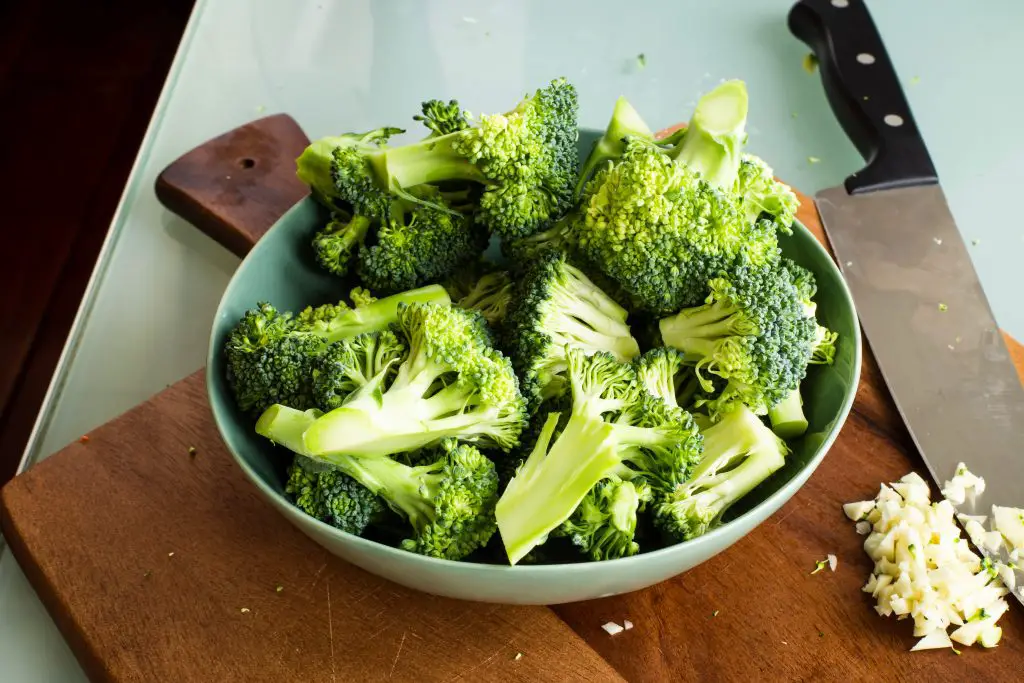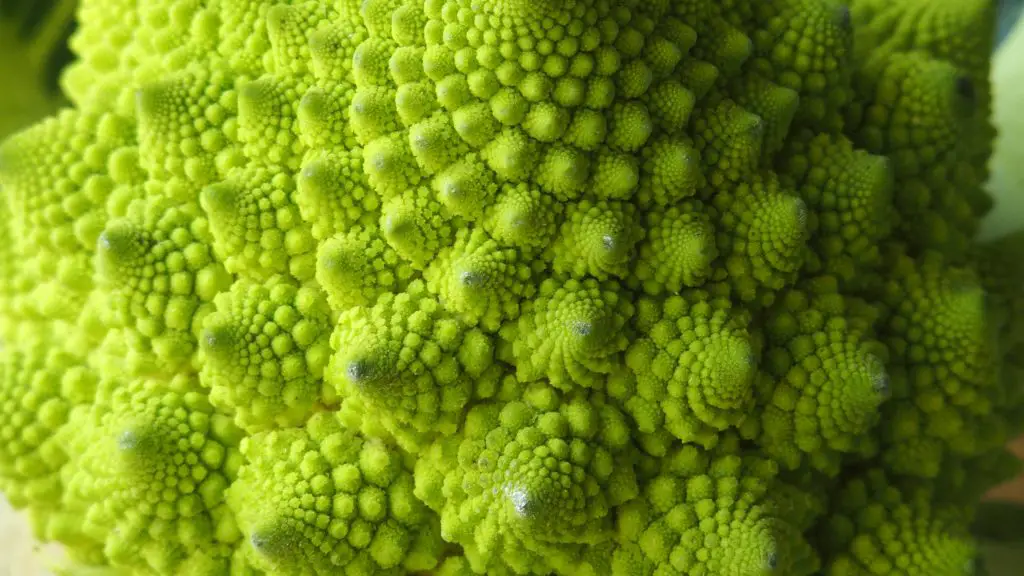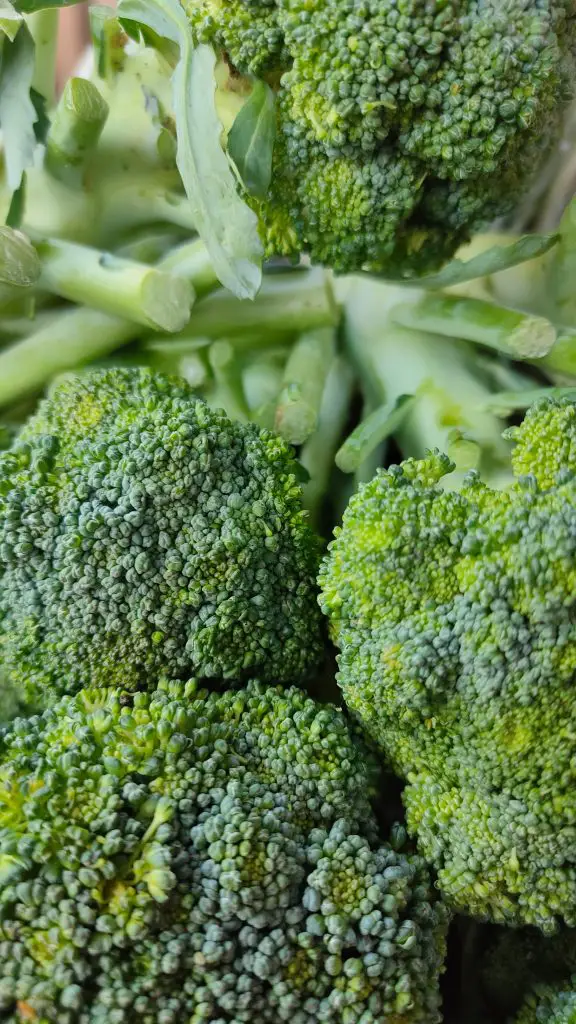Where Does Broccoli Grow? Broccoli is a widely grown vegetable these days with it being grown on nearly every continent. It is used in a broad range of cuisines from Asian to European food. So where did grow originally and what are the best climates and locations to grow it in your garden?
Broccoli originated in the Mediterranean and was selectively bred from wild cabbage rather than occurring naturally. Up until the 14th century, Broccoli was only grown in Italy before it started to spread to other parts of Europe. The vegetable itself grows best in the cooler parts of the year in sunny locations but will tolerate shade.
The precise date for the development is not known as written references from the Roman empire refer only to the wild cabbage family but not broccoli by name. The first direct reference to the vegetable by name occurred in 1560 in France.
Broccoli is only a cultivar or variety of the species Brassica oleracea. This species covers a wide range of popular vegetables the which are generally thought of as separate species but are, in fact, variations of the same one. Vegetables included with this group are cauliflower, cabbage, kohlrabi, brussels sprouts, and kale.
The varieties that can be interbred are defined are being the same species, which has allowed new cultivars to continue to be developed such as broccoflower which is a cross between broccoli and cauliflower.

What Are The Different Types Of Broccoli?
Though the definitions of broccoli are somewhat blurry at times, the types of Broccoli can generally be divided into 5 categories based on appearance, Calabrese, Romanesco, Sprouting Broccoli, Chinese Broccoli, and Broccolini.
Calabrese Broccoli, for most people that live in the western world, is the most familiar type as it is broadly available in major grocery stores. It is the variety that has heads that look like a miniature version of a tree. This type of broccoli has a relatively thick stem with clumps of small florets that combined together produce the appearance of the canopy of a tree.
These varieties are grown commercially because they take up less growing space than Romanesco varieties. They are also advantageous for home gardeners as they produce side shoots for several months after the main head is removed which enables the harvest period to be extended. Click here to read more about that.
The name of the general type, Calabrese was derived from the name of a single variety called Calabrese, which was used as a standard to compare other similar varieties.
Romanesco Broccoli is a striking form of broccoli that has distinctive lime green spirals. The texture of these types of broccoli is firmer than the Calabrese type. The plant itself has a similar growth habit to Cauliflower with the foliage is much thicker than the Calabrese varieties.
The plant is also significantly larger than the calabrese varieties. Due to this increased requirement for space, this variety is a less economically option for commercial production. It also has some disadvantages for home gardeners because these varieties produce only a single head of broccoli rather than side shoots which means that the plant generally yields less over a shorter period of time.

Sprouting Broccoli differs from the varieties mentioned thus far because sprouting Broccoli does not produce a main head, it produces instead a large number of side shoots. It is believed that this type of Broccoli appeared first before the Calabrese types, and was used as a basis to produce the Calabrese varieties with larger heads over time.
The most well-known variety in this group is Purple Sprouting Broccoli, however, there are Green and White varieties that are also available. In terms of taste, these varieties are similar to the Calabrese type.
These varieties are relatively useful for home gardeners because they can be overwintered to produce an early spring harvest. These plants can grow throughout the Winter period and will produce high-quality florets. Sprouting Broccoli can take anywhere from 70 days to 220 days to be ready to harvest, depending on the variety and the time of year the seed is sown.
Chinese Broccoli, also known as Chinese Kale, is widely used in China, as the name suggests. This variety is generally grown for its stalks, which are relatively large, rather than florets, which are smaller than other types of broccoli. This type of broccoli differs from other varieties because it is usually harvested after the plant has flowered. Other varieties are generally harvested prior to the swelling of beads in the head with will produce flowers shortly afterward.
It is featured widely in Cantonese cuisine and is frequently used in stir-fries or steamed as a side dish. However, due to its similar taste, it could easily be substituted for regular Broccoli in most recipes.
Broccolini is only a recent addition to the Broccoli family which was first developed in 1993. The variety is a cross Calabrese Broccoli with Chinese Broccoli. Broccolini has long slender stems with small florets and is a variety that has been growing in popularity over the last few years. The stems are more tender than ordinary Broccoli, but it is used in much the same way as other types of Broccoli.
How To Grow Broccoli
Broccoli is generally an easy plant to grow, that can be grown year-round in most climates, but is definitely best when grown in the cooler months of the year. This is particularly the case for Calabrese and Romanesco varieties because in hot weather the heads tend to go to flower quickly, which reduces the quality of the floret.
To avoid these periods of heat, and maintain a constant supply throughout the year it is best to stagger the plantings throughout the year. Sowing is best done as early as possible in the growing season in late winter, and then again in mid-summer and also at the start of Autumn.
Sowing in mid to late summer may seem counter-intuitive, however, if you sow at that point, the plant will not reach the point of producing heads until late Autumn when the weather is cooling down. This sowing is actually the most important one and should have the largest number of plants. The reason for this is that it will allow the heads to develop and sit in the garden for an extended period of time allowing harvests to be taken during the winter period.

How To Plant Broccoli Seeds
Broccoli seeds can be sown directly into the garden, however, I generally recommend sowing them into seed trays, irrespective of the time of the year.
The main reason for this is planting seeds in a tray reduces the amount of time that the plant spends in the garden which provides an opportunity to grow other crops in the garden while waiting for the seedlings to get large enough to plant out. This is particularly important in the summer sowing.
The other key advantage of sowing plants in seed trays is that it allows the climatic conditions to be controlled more easily. This is particularly advantageous in the early sowings, as seed trays can be kept inside in a warm environment which allows the seedlings to be started earlier in the season. Under these conditions, the ideal time to sow seeds is 4 to 6 weeks prior to the last frost.
When keeping seed inside it is important to maintain a constant temperature through the germination period to optimize the growth rate the easiest way to do this is to use a heated propagation tray.
The heated propagation trays provide the ideal growing conditions for germinating seedlings and they are not overly expensive to purchase. The one we recommend is the iPower Heating Seed Starter Germination Kit, shown in the picture below largely because it has a vented humidity dome and is relatively inexpensive. Click on the link to see the current price on Amazon.

When planting the seeds sow they should be sown at a depth of 0.5 inches (1 cm) with 2 seeds per cell. This ensures that there is at least one seedling per cell. If both seeds germinate remove the weakest seedling after a couple of weeks. When deciding on the number of seeds to sow it is advisable to plant 25 to 50% more seeds than you think you need just in case any are destroyed when they are planted out in the garden.
As mentioned earlier seedlings will take around 6 weeks to develop sufficient size to allow the seedling to be planted out into the garden. The plants should be spaced 1.5 to 2 ft (45 to 60 cm) apart ideally after the risk of frost has passed. The plants should be planted at a depth that is approximately equal to the height that the plant is in the seed tray.
In terms of soil conditions broccoli generally prefers rich moist soil that is free draining with plenty of nutrients. To ensure that the plant has sufficient nutrients it is advisable to add additional compost to the soil before planting.
It is also advisable to add some slug and snail protection when the plants are put into the garden. The easiest way to do this is to sprinkle snail pellets around the plants.
Caring For Broccoli Plants
Once planted Broccoli requires very little maintenance, the main thing is to ensure that the plant is watered regularly and that the beds are kept weed-free to stop them from competing for nutrients.
However, if you live in a region that has extremely cold winters it may be necessary to provide some protection from the weather. The easiest way to do this is to use a row cover, however, as mature broccoli plants are usually 2 ft tall you will need the row cover to be relatively tall.
The product we recommend is the Growsun Garden Tunnel Plant Cover because it will meet the height requirements and it also has hoops that can be anchored deeply into the ground which allows it to resist wind. The product is shown in the image below.

Once the head of the broccoli first appears on the plant it is important to keep a close eye on its development particularly if the weather is relatively warm as this can speed up the growth rate. It is important to harvest the heads prior to the beads within the florets opening up to form flowers.
If you are monitoring the heads closely it can be easy to see the beads beginning to swell, this means that the production of flowers is imminent. This is the point at which the plant needs to be harvested.
It is important to note that waiting for the beads in the florets swell will maximize the size of the head produced, however, there is no reason why the head cannot be harvested earlier. Conversely, if the head flowers it can still be picked and eaten but the quality of the florets will be reduced.
